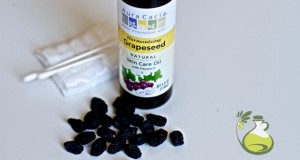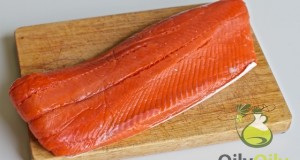
Photo credit: wikipedia
Safflower cooking oil is derived from safflower seeds. Safflowers are plants that grow in India, the Far East and other territories. In the USA they are cultivated in Arizona and California for their seeds which are pressed to get oil. Two safflower varieties produce two different safflower oils.
Contents
High oleic safflower oil for cooking
The first type of the safflower plant is rich in oleic acid. According to Oilseeds International, Ltd., the oil from its seeds is wonderful for cooking, especially high-heat. Oleic safflower oil mainly contains omega-9 fatty acids, which are healthy monounsaturated fats beneficial for our heart, brain and the immune system. That’s why safflower oil is good for us. The nutrients of this oil are not lost at high temperatures. The fact is that oleic safflower oil, especially refined one, has a high smoke point. Smoke point is the temperature at which cooking oil breaks into free fatty acids and glycerol and it starts smoking. Oil begins to lose its nutritional value and even becomes harmful. Due to the highest smoke point of all oils refined safflower oil for cooking is ideal. High oleic safflower is used for frying and roasting, sautéing and baking, salad dressings and sauces.
Unrefined oleic safflower oil has a smoke point of 225ºF and suits for low-heat cooking. If you use this safflower cooking oil you will receive the same nutritional ingredients that olive oil provides at a much lower price.
SEE ALSO: The Comparison of Safflower Oil vs Olive Oil
Linoleic safflower oil for cooking
The second type of safflower oil for cooking is oil rich in polyunsaturated linoleic acid. It is omega-6 fatty acid with various beneficial properties and essential for the body functioning. Polyunsaturated fatty acids are fragile in their structure and become changed due to heat, oxygen and light. These conditions can make polyunsaturated safflower oil rancid, so keep this safflower oil only in a cool and dark place. Due the delicate structure of linoleic safflower oil you’d better prepare only salad dressings and sauces with this type of safflower cooking oil.
RELATED: Flaxseed Oil for Cooking – is it Possible?
Ways of using safflower cooking oil
Way 1
Cover your pan with refined oleic safflower oil instead traditional vegetable oil for stir-fry. Heat it. High temperatures are allowed. Add vegetables and chicken or fish rich in lean proteins. As safflower oil is almost tasteless, the taste of your dish will be more pronounced.
Way 2
Use high-heat oleic safflower oil in a pancake recipe. Safflower oil is a wonderful substitute for palm, coconut or vegetable oils used in baking. (Read more about using oils in baking). Safflower oil won’t smoke and adds no additional flavor to your pastries and cakes.
Way 3
Substitute safflower oil for canola oil in your favorite recipe of curry. Safflower oil is richer in monounsaturated fatty acids and has fewer harmful saturated fats than canola oil.
Way 4
Create a marinade of safflower oil with spices and herbs for your chicken. A good idea is to add paprika, cayenne pepper, garlic, and your favorite herbs alongside with salt. Add this marinade to your chicken and leave for a few hours or better overnight for better soaking. Stir-fry or stew in an oven.
 Oilypedia.com – Benefits And Uses Of Supplemental and Essential Oils
Oilypedia.com – Benefits And Uses Of Supplemental and Essential Oils 


